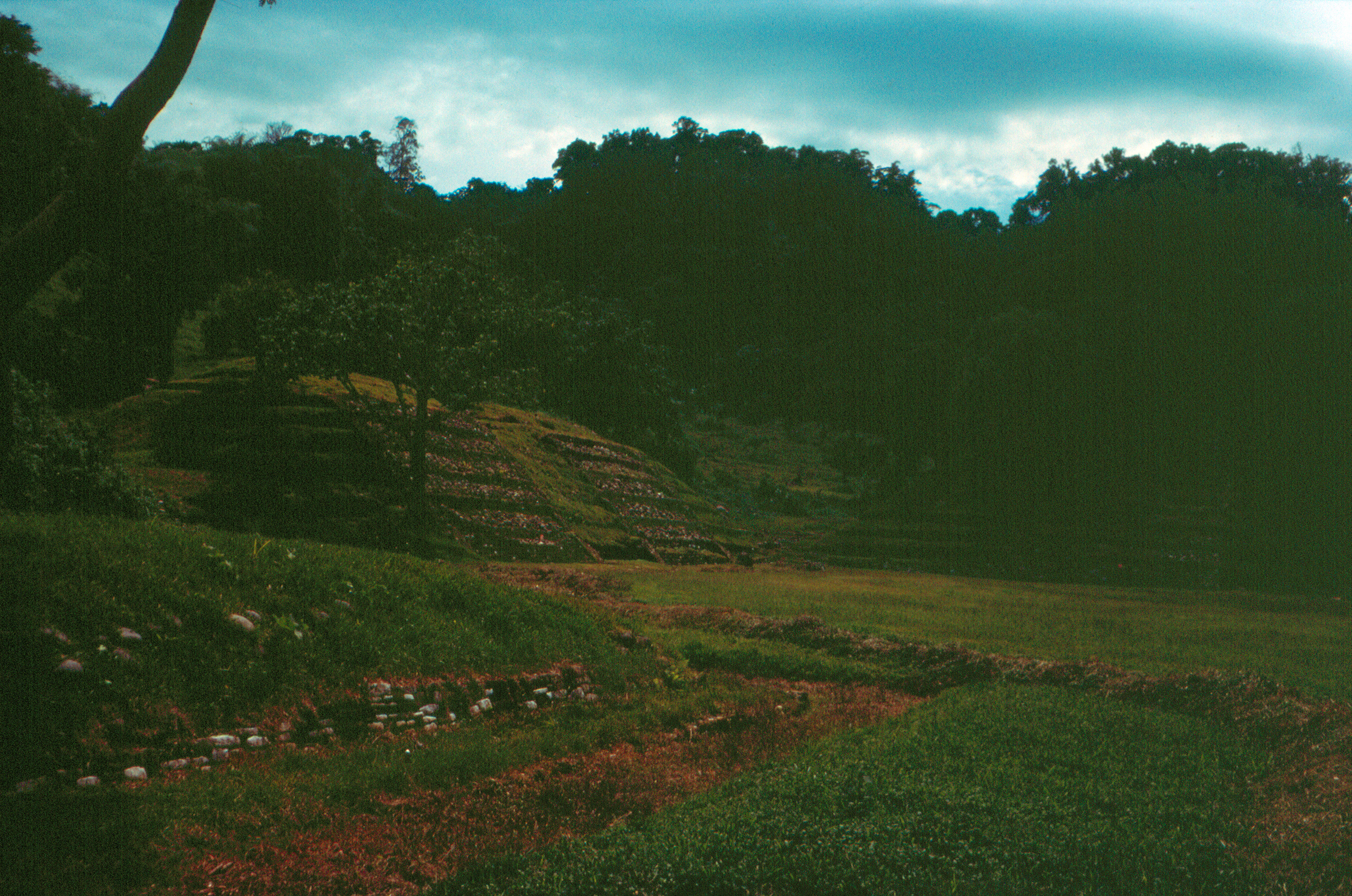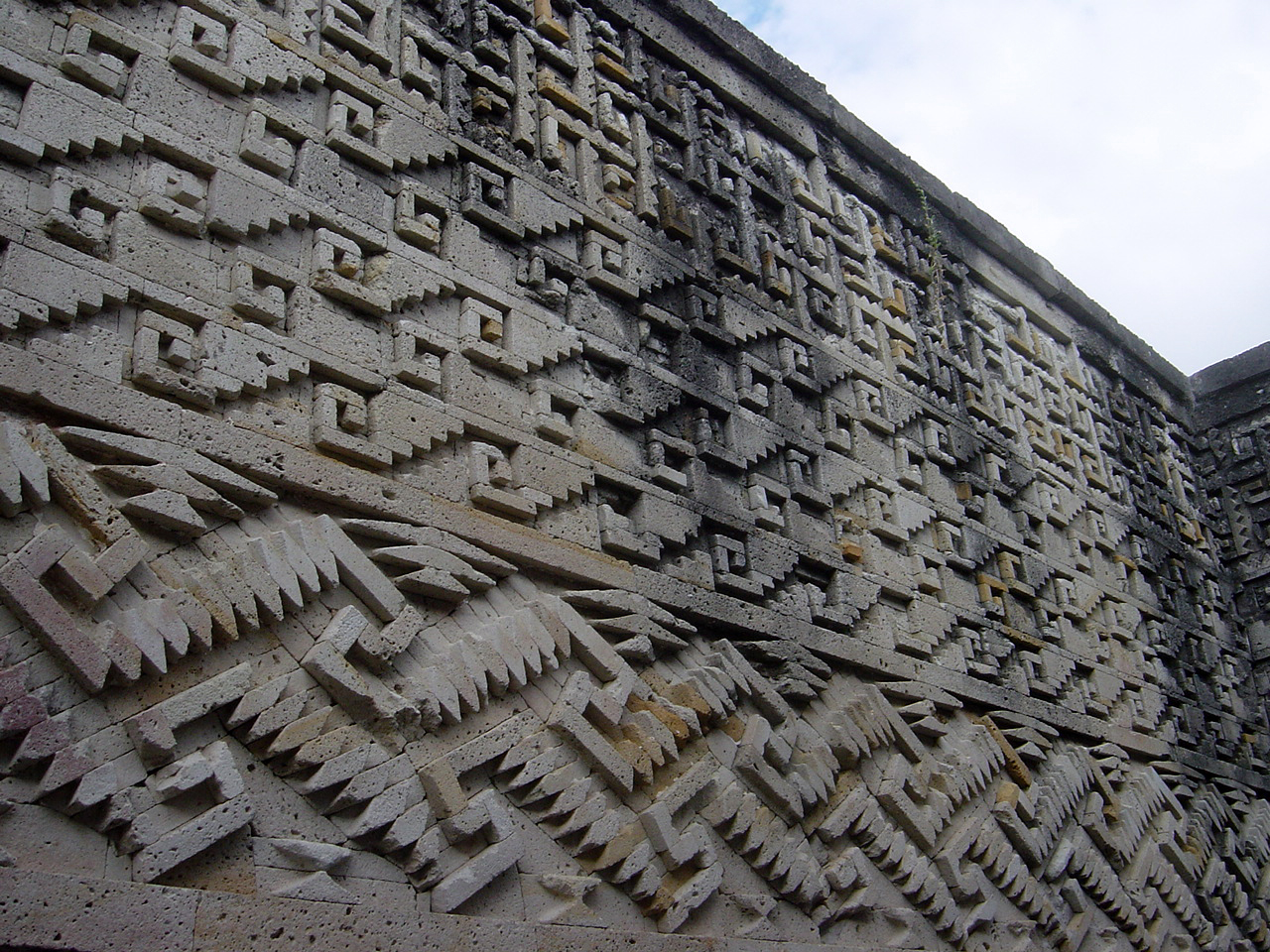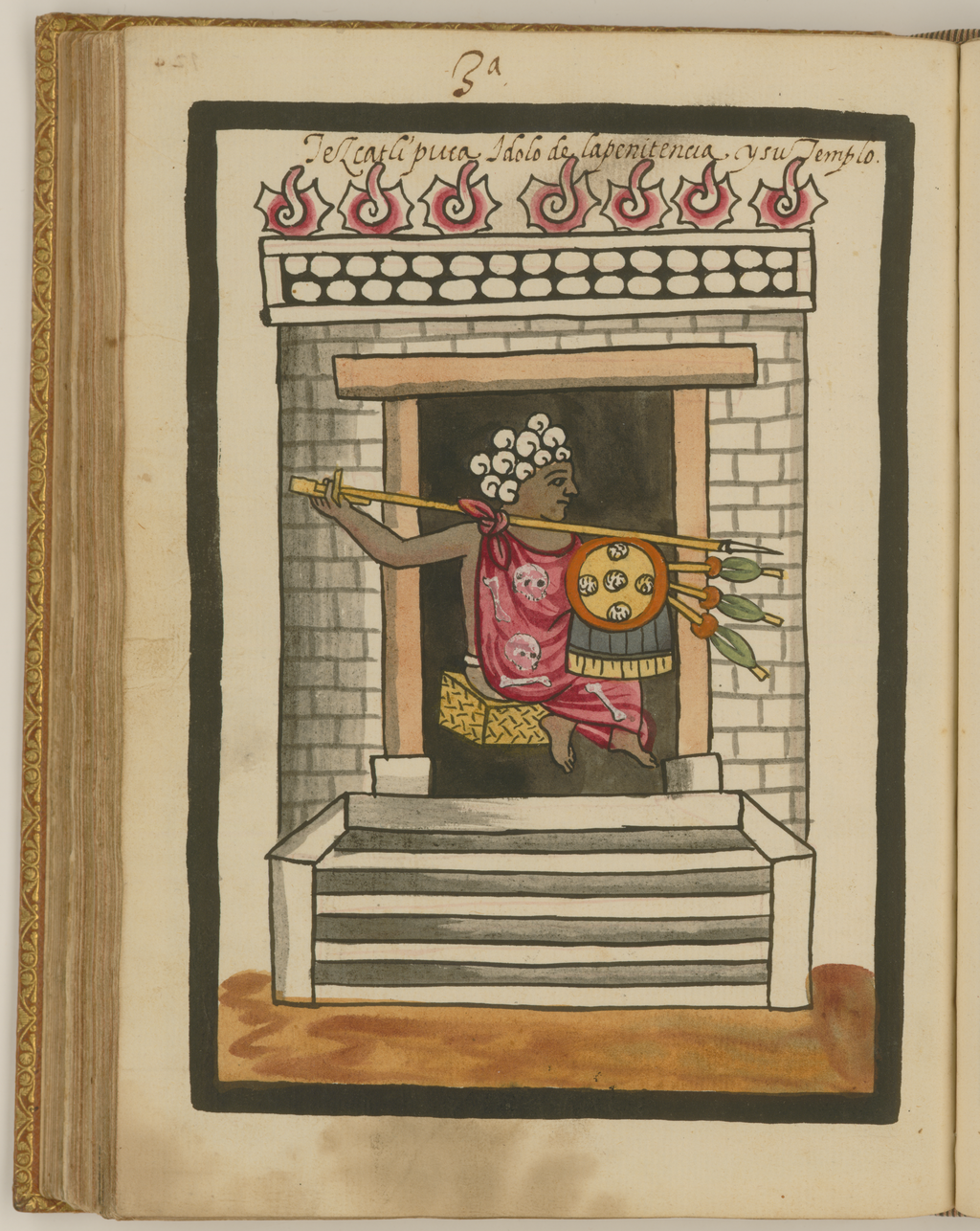|
El Cuajilote
El Cuajilote or Filobobos is an archeological site of the Totonac Culture, located in the Tlapacoyan municipality, Veracruz state, México. Just as in many other Mesoamerican sites, the original name is unknown and arbitrarily names are assigned, sometimes local names are used, in this case, the name “El Cuajilote” derives from the “Chote” tree from the Totonac region, although the tree is scarce in the area nowadays. This site is part of the Filobobos zone, where vestiges of at least six archaeological sites are known. Currently only two have been explored; Vega de la Peña and El Cuajilote. Cuajilote, is also the name of a tree ('' Parmentiera aculeata''), also known as huachilote or monkey cocoa, typical of low deciduous forest, exist in broad territories in the South and Centre Mexico. According to INAH the Filobobos name derives from the local sharp profiles (“Filos”) of gorges and ravines, created by a geologic phenomenon from the Cenozoic era, and of “bob ... [...More Info...] [...Related Items...] OR: [Wikipedia] [Google] [Baidu] |
Matrícula De Tributos
The Matrícula de Tributos (English: Tribute roll) is a 16th-century central Mexican manuscript on amatl paper, listing the tributes paid by the various tributaries of the Aztec Empire. Each page of the 16-page manuscript represents the tribute of one province, read from the bottom left up. The province's major city is listed first; then farther up the page are tributes from cities under the rule of the major city. Each glyph shows the town's or city's tribute item, and indicates how many of the items were contributed in Nahuatl. Hernán Cortés had people make copies of the tribute roll to learn more about the Aztec economy. With its hundreds of tribute glyphs, the Matrícula is considered an important document in the study of Nahuatl and Aztec culture, mathematics, governance, economy and geography. It is held in the collection of the Instituto Nacional de Antropología e Historia. The Matrícula was the source for the tribute section of the Codex Mendoza The Codex Mendoz ... [...More Info...] [...Related Items...] OR: [Wikipedia] [Google] [Baidu] |
Xicalcoliuhqui
Xicalcoliuhqui (also referred to as a "step fret" or "stepped fret" design and ''greca'' in Spanish) is a common motif in Mesoamerican art. It is composed of three or more steps connected to a hook or spiral, reminiscent of a "greek-key" meander. Pre-Columbian examples may be found on everything from jewelry, masks, ceramics, sculpture, textiles and featherwork to painted murals, codices and architectural elements of buildings. The motif has been in continual use from the pre-Columbian era to the present. Connotations The word ''xicalcoliuhqui'' () means "twisted gourd" (''xical''- "gourdbowl" and ''coliuhqui'' "twisted") in Nahuatl. The motif is associated with many ideas, and is variously thought to depict water, waves, clouds, lightning, a serpent or serpent-deity like the mythological fire or feathered serpents, as well as more philosophical ideas like cyclical movement, or the life-giving connection between the light of the sun and the earth, and it may have been a protec ... [...More Info...] [...Related Items...] OR: [Wikipedia] [Google] [Baidu] |
Geoglyph
A geoglyph is a large design or motif (generally longer than 4 metres) produced on the ground by durable elements of the landscape, such as stones, stone fragments, gravel, or earth. A positive geoglyph is formed by the arrangement and alignment of materials on the ground in a manner akin to petroforms, while a negative geoglyph is formed by removing part of the natural ground surface to create differently coloured or textured ground in a manner akin to petroglyphs. Geoglyphs are generally a type of land art, and sometimes rock art. A hill figure is created on a slope, so that it can be seen from a distance. Ancient Perhaps the most famous geoglyphs are the Nazca lines in Peru. The cultural significance of these geoglyphs for their creators remains unclear, despite many hypotheses. The "Works of the Old Men" in Arabia, "stone-built structures that are far more numerous than (the) Nazca Lines, far more extensive in the area that they cover, and far older," have been descr ... [...More Info...] [...Related Items...] OR: [Wikipedia] [Google] [Baidu] |
Tlaltecuhtli
Tlaltecuhtli (Classical Nahuatl ''Tlāltēuctli'', ) is a pre-Columbian Mesoamerican deity worshipped primarily by the Mexica (Aztec) people. Sometimes referred to as the "earth monster," Tlaltecuhtli's dismembered body was the basis for the world in the Aztec creation story of the fifth and final cosmos. In carvings, Tlaltecuhtli is often depicted as an anthropomorphic being with splayed arms and legs. Considered the source of all living things, she had to be kept sated by human sacrifices which would ensure the continued order of the world. According to a source, in the creation of the Earth, the gods did not tire of admiring the liquid world, no oscillations, no movements, so Tezcatlipoca and Quetzalcoatl thought that the newly created world should be inhabited. And for this, they made Tlalcihuatl, 'Lady of the earth', come down from heaven, and Tlaltecuhtli, 'Lord of the earth', would be her consort. Tezcatlipoca and Quetzalcoatl create the Earth from the body of Cipactli, a ... [...More Info...] [...Related Items...] OR: [Wikipedia] [Google] [Baidu] |
Tezcatlipoca
Tezcatlipoca (; nci, Tēzcatl ihpōca ) was a central deity in Aztec religion, and his main festival was the Toxcatl ceremony celebrated in the month of May. One of the four sons of Ōmeteōtl, Ometecuhtli and Omecihuatl, the God of providence, he is associated with a wide range of concepts, including the night sky, the night winds, hurricanes, the north, the earth, obsidian, hostility, discord, rulership, divination, temptation, Jaguars in Mesoamerican cultures, jaguars, sorcery, beauty, war, and conflict. His name in the Nahuatl language is often translated as "Smoking Mirror" and alludes to his connection to Obsidian use in Mesoamerica, obsidian, the material from which Mirrors in Mesoamerican culture, mirrors were made in Mesoamerica and which were used for shamanism, shamanic rituals and prophecy. Another talisman related to Tezcatlipoca was a disc worn as a chest pectoral. This talisman was carved out of abalone shell and depicted on the chest of both Huitzilopochtli and ... [...More Info...] [...Related Items...] OR: [Wikipedia] [Google] [Baidu] |
Mesoamerican Ballgame
The Mesoamerican ballgame ( nah, ōllamalīztli, , myn, pitz) was a sport with ritual associations played since at least 1650 BC by the pre-Columbian people of Mesoamerica, Ancient Mesoamerica. The sport had different versions in different places during the millennia, and a newer, more modern version of the game, ''Ulama (game), ulama'', is still played by the Native Mexicans, indigenous populations in some places.Fox, John (2012)''The ball: discovering the object of the game"'' 1st ed., New York: Harper. . Cf. Chapter 4: "Sudden Death in the New World" about the Ulama game. The rules of the Mesoamerican ballgame are not known, but judging from its descendant, Ulama (game), ulama, they were probably similar to racquetball, where the aim is to keep the ball in play. The stone ballcourt goals are a late addition to the game. In the most common theory of the game, the players struck the ball with their hips, although some versions allowed the use of forearms, rackets, bats, or ... [...More Info...] [...Related Items...] OR: [Wikipedia] [Google] [Baidu] |
Phallus
A phallus is a penis (especially when erect), an object that resembles a penis, or a mimetic image of an erect penis. In art history a figure with an erect penis is described as ithyphallic. Any object that symbolically—or, more precisely, iconically—resembles a penis may also be referred to as a phallus; however, such objects are more often referred to as being phallic (as in "phallic symbol"). Such symbols often represent fertility and cultural implications that are associated with the male sexual organ, as well as the male orgasm. Etymology The term is a loanword from Latin ''phallus'', itself borrowed from Greek (''phallos''), which is ultimately a derivation from the Proto-Indo-European root *''bʰel''- "to inflate, swell". Compare with Old Norse (and modern Icelandic) ''boli'' "bull", Old English ''bulluc'' "bullock", Greek "whale". Archaeology The Hohle phallus, a 28,000-year-old siltstone phallus discovered in the Hohle Fels cave and reassembled in 2005, i ... [...More Info...] [...Related Items...] OR: [Wikipedia] [Google] [Baidu] |
Filobobos River
The Bobos River, also known as the Filobobos or Filo-Bobos River, is a river of Veracruz state of eastern Mexico. The Bobos River is a tributary of the Nautla. It originates on the northern slope of Cofre de Perote volcano, and flows northwards through a canyon before joining the Nautla, which then empties eastwards into the Gulf of Mexico. The Bobos River canyon separates the Sierra de Chiconquiaco on the east from the Sierra Madre Oriental and Trans-Mexican Volcanic Belt on the west.Lascurain Rangel, M., Avendaño-Reyes, S., Cházaro-Basañez, M., Geissert-Kientz, D., Villegas-Patraca, R., Gallo-Gómez, C. A., & Gutiérrez-Báez, C. (2017). Floristic, vegetational and geographic characteristics of the Sierra de Chiconquiaco, Veracruz, Mexico. Botanical Sciences, 95(4), 610-659. https://doi.org/10.17129/botsci.1111 A protected area, known as Río Filo-Bobos y su Entorno, protects the lower stretch of the Bobos and a portion of the Nautla River valley near the confluence. The prote ... [...More Info...] [...Related Items...] OR: [Wikipedia] [Google] [Baidu] |
Temazcal
A temazcal is a type of sweat lodge, which originated with pre-Hispanic indigenous peoples in Mesoamerica. The term ''temazcal'' comes from the Nahuatl language, either from the words (to bathe) and (house), or from the word (house of heat). Overview In ancient Mesoamerica it was used as part of a curative ceremony thought to purify the body after exertion such as after a battle or a ceremonial ball game. It was also used for healing the sick, improving health, and for women to give birth. It continues to be used today in Indigenous cultures of Mexico and Central America that were part of the ancient Mesoamerican region for spiritual healing and health enrichment reasons. The temazcal is usually a permanent structure, unlike sweat lodges of other regions. It has various construction styles differing by region; from volcanic rock and cement adobe mud bricks even wood mud and cloth can be utilized. It may be a circular dome made to represent the uterus, although rectangular ... [...More Info...] [...Related Items...] OR: [Wikipedia] [Google] [Baidu] |
Nahuatl
Nahuatl (; ), Aztec, or Mexicano is a language or, by some definitions, a group of languages of the Uto-Aztecan language family. Varieties of Nahuatl are spoken by about Nahua peoples, most of whom live mainly in Central Mexico and have smaller populations in the United States. Nahuatl has been spoken in central Mexico since at least the seventh century CE. It was the language of the Aztec/ Mexica, who dominated what is now central Mexico during the Late Postclassic period of Mesoamerican history. During the centuries preceding the Spanish and Tlaxcalan conquest of the Aztec Empire, the Aztecs had expanded to incorporate a large part of central Mexico. Their influence caused the variety of Nahuatl spoken by the residents of Tenochtitlan to become a prestige language in Mesoamerica. After the conquest, when Spanish colonists and missionaries introduced the Latin alphabet, Nahuatl also became a literary language. Many chronicles, grammars, works of poetry, administrative docu ... [...More Info...] [...Related Items...] OR: [Wikipedia] [Google] [Baidu] |





